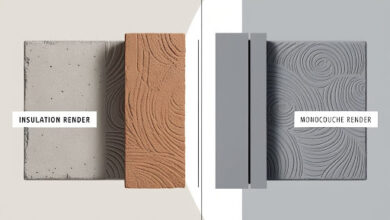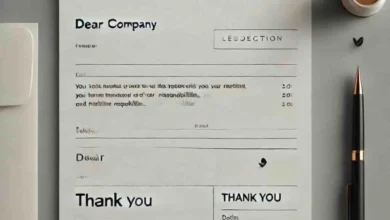The Future of Workplaces: Merging Technology, Design, and Wellness

Introduction to Modern Workplaces
The evolution of work environments reflects the dynamic nature of our times. With technology at the forefront, office spaces must adapt to ever-changing needs. This integration of state-of-the-art technology into everyday workspaces is just the beginning. The overarching aim is to create environments that are both efficient in their functionality and inspiring in their design.
The Role of Technology in Modern Workspaces
Technology serves as a cornerstone of contemporary office design. Innovative systems that adjust lighting, heating, and even desk height based on employee preferences underscore the drive toward a more efficient, connected workplace. Such innovations are not merely about comfort; they significantly enhance productivity by reducing time spent on mundane tasks. Moreover, the rise of technologies like augmented reality (AR) and virtual reality (VR) is opening new workplace interaction and training opportunities. Just as Syracuse UT real estate agents Doxey Real Estate Group are innovating in catering to client needs, workplaces are being reimagined with a focus on technological advancement and human-centric design.
Designing for Productivity and Comfort
The physical layout of an office is instrumental in fostering a productive atmosphere, often serving as a silent guide to workflow. Modern offices are moving away from rigid, compartmentalized spaces to embrace more open, flexible designs. According to a TechRepublic article, companies that integrate these digital tools report heightened employee engagement and improved collaborative efforts, proving that tech-savvy offices are well-equipped for future challenges. These spaces promote spontaneous interactions among teams while accommodating areas for deep work. Ergonomic furniture, which supports a variety of postures, is becoming standard, offering substantial health benefits that reduce physical strain. Intelligently designed workplaces utilize natural lighting and strategically chosen color palettes to uplift moods and enhance focus. By balancing elements of comfort with functionality, these spaces inspire innovation and sustain productivity over extended periods.
Incorporating Wellness into the Office
In today’s corporate culture, wellness goes hand in hand with productivity. Employers increasingly prioritize their staff’s health and happiness as a strategic focal point. Wellness programs now encompass many features, from on-site gyms to mental health days and meditation rooms. Creating an office environment that promotes physical activity and mental well-being is no longer just a perk—it’s a necessity. A study on Well Certified underscores that wellness-focused designs decrease absence rates and enhance job satisfaction. Incorporating natural elements such as plants and water features into the workspace beautifies the environment, purifies the air, and provides a calming influence, illustrating how biophilic design can improve employee well-being.
The Rise of Flexible Workspaces
Flexibility is emerging as a defining attribute of the modern workplace. With the integration of remote and hybrid work models, office layouts must be as adaptable as the schedules of the employees who use them. Flexible spaces, characterized by movable furniture and dynamic room configurations, can shift to accommodate various working styles and team sizes. This approach facilitates a more personalized workflow experience, enabling employees to choose environments that best suit their needs for focus or collaboration at any given time. Companies adopting these flexible layouts maximize space utility and support a healthier work-life balance, contributing to overall employee well-being and satisfaction.
A Case Study: A Successful Office Transformation
Consider the case of a forward-thinking tech firm that recently revamped its headquarters with a commitment to sustainability, technology, and wellness. When redesigned their office spaces, they incorporated various intelligent technologies and sustainable materials, like recycled wood and energy-efficient lighting. These updates lowered their environmental impact and created a healthier, more aesthetically pleasing workspace. They built areas encouraging collaboration and used sound-absorbing materials to manage noise, enhancing productivity and creativity. The company saw a noticeable uptick in employee retention and received positive feedback on the new environment, proving that an investment in space can yield significant returns.
Challenges and Solutions in Modern Workplace Design
While the advantages of modern workplace redesign are clear, the process can be fraught with challenges. Financial constraints can hamper the implementation of new designs, while ingrained corporate cultures may resist change. However, these challenges are manageable. Organizations can ease transitions by engaging employees in the redesign process and seeking their input to ensure the new workspace meets their needs. Phased rollouts allow companies to spread costs over time and gradually accustom employees to new changes. Pilot projects can serve as first steps, effectively demonstrating the potential benefits and garnering support from all levels of the organization.
Looking Ahead: Trends to Watch
The future of workplace design is exciting and promising, with trends like biophilic integration and intelligent technology leading the way. Biophilic design, focusing on incorporating elements of nature into built environments, is reputed for its benefits to mental health and cognitive function. Enabled through technology, personalization allows spaces to adapt to individual preferences and work habits, fostering a comfortable and motivational environment. As companies continue to innovate, we can expect workplaces to evolve into vibrant communities that are as sustainable as they are effective, making them places where people work and thrive.
Stay in touch to get more updates & news on Live Buzzinsight!





